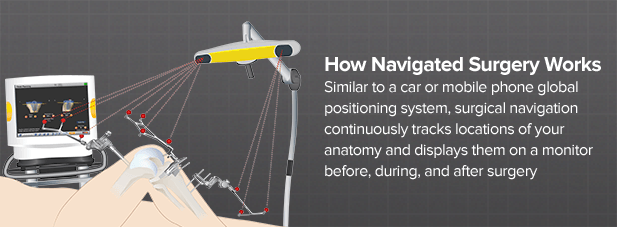
Software-guided knee replacement surgery is an established and proven method to improve accuracy1 reproducibility, and enhance the overall clinical outcome.2
If you and your doctor decide that surgery is the next best step, you may be interested in learning more about medical technologies that are available to surgeons. Software-guided surgery is also referred to as computer assisted surgery (CAS), navigated surgery, computer-aided surgery, computer navigated surgery, image-guided surgery (IGS), and computer-assisted intervention.
A 2011 study shows that software-guided knee replacement significantly improves patient outcome scores. In this study, 91% of the computer assisted surgery patients were extremely or very satisfied versus 70% of the conventional surgery patients.2
Conventional knee replacement refers to knee surgery performed without the support of a software-guided system.
In general, there are some challenges associated with conventional knee replacement including:
In order to restore the correct overall leg alignment during knee replacement surgery, the surgeon aligns the prosthesis so that the mechanical axis passes through the center of the joint. Achieving a neutral mechanical axis creates an even load across the medial (inside) and lateral (outside) parts of the knee implant. Learn about knee axis »
This realignment is important for proper implant fit, stability and functionality of the knee. Misalignment of the implant components may lead to dislocation; feelings of instability, increased implant wear and potential necessity of revision surgery. Such an additional surgery not only bears the risks of another surgical intervention, but also carries with it the probability of additional bone loss.